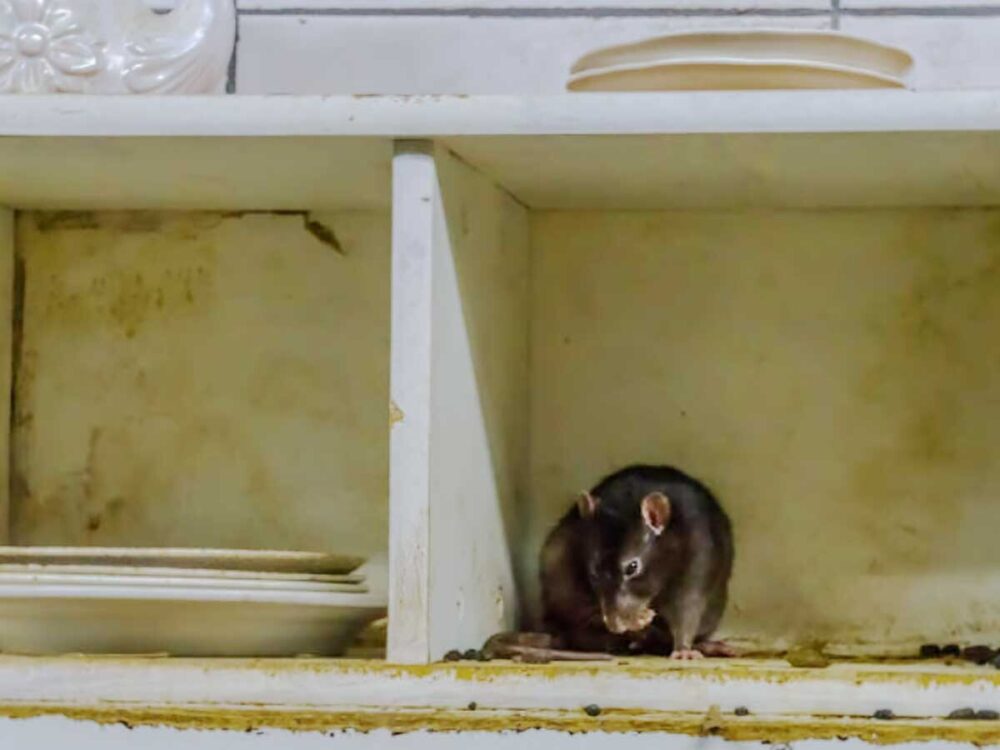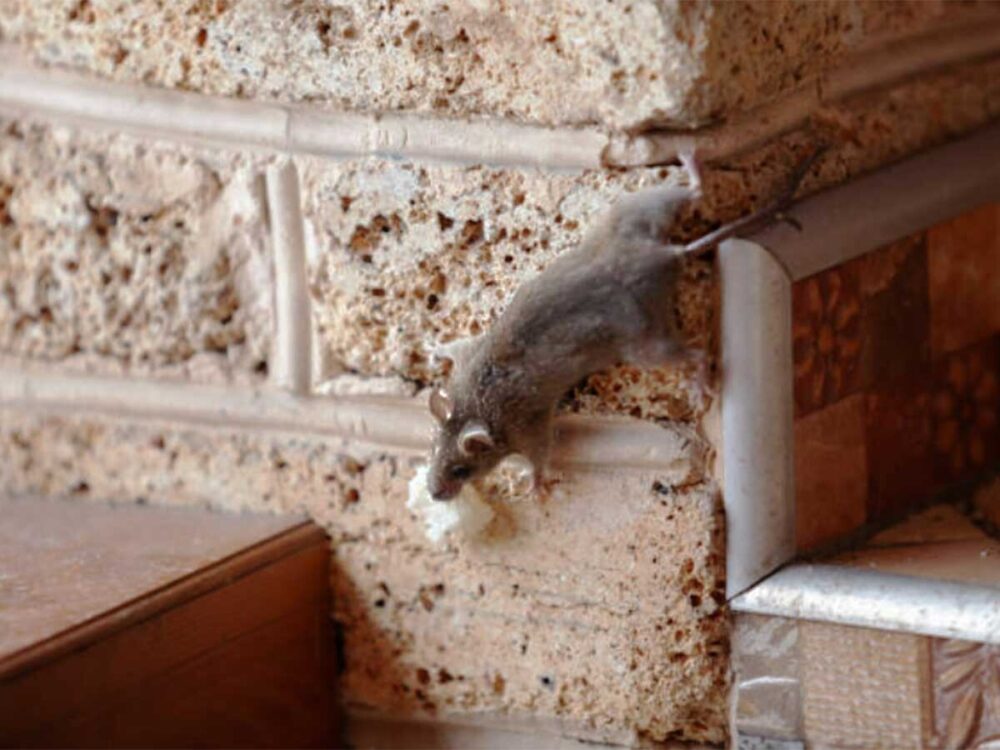Rodent Control

It can seem nightmarish when you find signs of rodents in your home, even for those who aren’t particularly scared of them. They can carry and spread serious diseases and illnesses to humans, as well as introduce other pests into your home, such as fleas, ticks, and mites. Mice can find their way through the tiniest of holes and gaps, and rats can chew through many materials. Apart from the horror of stumbling across rodents, is it critical to exterminate rodents ASAP to avoid the health risks. If they are left to multiply, they can quickly become an uncontrollable plague across a region.
CleanMade pest control is here to help, with tamper-proof bait boxes that are placed in key areas of your home to eradicate rodents effectively, with results visible from as early as 7 days. Enquire now for a free written quote on our services.

What To Do When You Find Signs Of Rodents
Rodents love hanging out close to sources of food and water. You often won’t see them though, so you will need to investigate if you find signs.
Rodents In Kitchens
Rodents will find fruit bowls, opened food products, crumbs and scraps of food left out in the kitchen especially inviting. Prevent rodents in the kitchen by keeping it clean and free of any food or water source.
Rodents In Garages
Another favourite hangout of rodents is garages, because they are usually adjoining to the home where they can easily access food, and can be a warm place for nesting. If you store any edible items in the garage, it can become the perfect place for rodents. Remove rubbish and edible items.
Rodents In Gardens
Believe it or not, rodents also love gardens, especially with edible plants and water bowls. Rats can dig large tunnels underground. Openings in the ground will be about the size of a golf ball. There is not much you can do, but ensure no compost, pet food or unnecessary food sources are available. You could try chicken wire to close up the holes, but they may just dig more, so your next step will be to get in touch with our rodent control professionals.
Contact your relevant state health department for more information.

What Damage and Diseases Can Rodents Cause?
Diseases and illnesses can be spread directly by rodent fur, urine, faeces and saliva, or indirectly through another pest hosted or feeding on them.
Diseases spread directly by rodents:
Hantavirus
Hantavirus Pulmonary Syndrome
Hemorrhagic Fever with Renal Syndrome
Lassa Fever
Leptospirosis
Lujo Hemorrhagic Fever
Lymphocytic Choriomeningitis (LCM)
Monkeypox
Omsk Hemorrhagic Fever
Rat-Bite Fever
Salmonellosis
Sylvatic Typhus
Tularemia
Diseases spread indirectly by rodents:
Anaplasmosis
Angiostrongylus
Babesiosis
Borreliosis
Colorado tick fever
Cutaneous leishmaniasis
Flea-borne (Murine) Typhus
Hymenolepis diminuta
La Crosse virus
Lyme disease
Moniliformis moniliformis
Plague – Bubonic, Septicemic, Pneumonic
Powassan virus
Rickettsialpox
Scrub typhus
Tick-borne Relapsing Fever
Tularemia
How to Tell The Difference Between a Rat and a Mouse
As most people know already, mice are smaller than rats. You could fit a mouse’s body across the width of your palm, whereas rats would possibly take up the entire width of two palms. Rodents are omnivores, eating mostly nutrient-rich grains, cereals, fruits, nuts and seeds, supplemented by insects and animal meat.
House Mice
Mice usually have small heads and large hairy ears, tails about 10cm long, and their droppings will have pointed ends and be about the size of a small grain of rice, although they can be narrow. They are usually grey or light brown with pink feet. They live in hidden, enclosed spaces and nest in soft materials.
Norway Rats
Norway rats have larger and longer heads with smaller ears relative to the size of their head, tails about 15-20cm long, and leave droppings that have rounded ends and can be curved. They are grey or brown with grey belly fur and feet (hind feet are particularly large). They live and nest at ground level, and build tunnels in gardens.
Roof Rats
Roof rats can look similar to a mouse in that they are smaller than a Norway rat, and have large ears like a mouse, but their ears are usually hairless and their tails are longer at about 25cm. They leave droppings with pointed ends about the length of a sunflower seed. They are grey, brown or black with pink feet, and some also have white belly fur. They live and nest higher up in roof cavities and attics.
You might also be interested in
Become a Franchisee
"*" indicates required fields